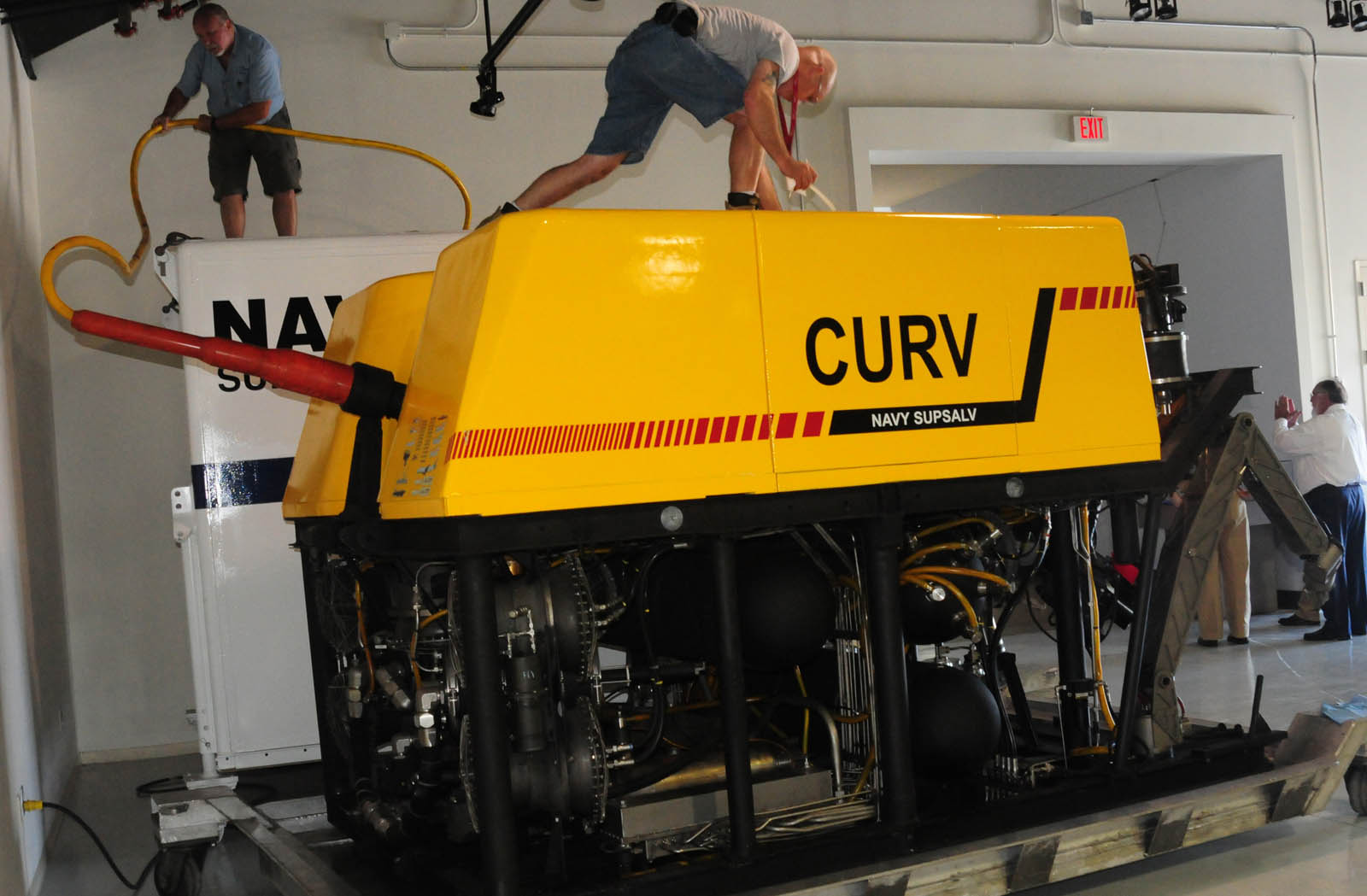When it comes to search and rescue operations in a maritime environment, the US Navy relies heavily on the CURV-21. The CURV-21 is a remotely operated vehicle (ROV) measuring in at around 8’x5’x7’ and can operate at depths of up to 20,000 ft. The system comes with a large choice of sensors and manipulators to handle just about any search and rescue task.
1. What proprioceptive and exteroceptive sensors does your selected system have that are specifically designed for the maritime environment?
The CURV-21 has an extensive amount of sensors specifically designed for maritime use (SEA 00C2, n.d.):
- Electronic gyrocompass
- Attitude and heading reference unit
- Underwater radio direction finder
- High resolution Kongsberg 1364 color video on pan and tilt
- Wide angle black and white fixed pilot camera
- 3.3 megapixel digital still camera with strobe
2. What is one modification you would make to the existing system to make it more successful in search and rescue operations?
One of the issues with the CURV-21 is the fact that it is a ROV, and therefore tethered by a cable to provide control for the system. The one modification that I would make would be to provide an autonomous capability for this highly capable system, at least for the initial search phase of the search and recovery. This would allow the system the ability to travel unencumbered, which would greatly speed up the ability of the system to search a desired space (Martin, 2013). Or potentially, the umbilical could be connected to a floating RF transmitter that would remain above the surface, thus allowing operators control and visibility of the craft’s sensors, while not having to remain physically connected to the mother ship.
3. How might maritime unmanned systems be used in conjunction with UAS to enhance their effectiveness?
A UAS could provide a variety of enhancements to help an UMS. First, a UAS can provide a different perspective to the imagery that a UMS can see. Additionally, a UAS can cover a significantly larger area, much faster than a UMS can. Next, a UAS could provide range extension for datalinks to a UMS that may be out of Line-of-sight to the surface vessel where it is being controlled. Finally, another possibility is the teaming of UAVs to launch UUVs (Button, 2009)
4. What advantages do unmanned maritime systems have over their manned counterparts? Are there sensor suites that are more effective on unmanned systems?
Ed Gough, the Chief Scientist and Chief Technology Officer at the NATO Undersea Research Center said it best: “the undersea vehicle has to be big enough to carry them (the sailors), and their equipment and their food and their life support and their air conditioning and all their weapons” (Lundquist, 2012). It’s obvious that by only installing those things needed for the mission, that there’s a clear advantage.
With respect to sensor suites that are more effective on unmanned systems, there has been a big push in using unmanned systems to support long-endurance missions such as ocean monitoring or searches (Button, 2009). Additionally, there is clearly a benefit of being able to maneuver a sensor on a small UUV that is not hindered by having to be large enough to hold a human and the associated life support systems.
References:
- Button, R., Kamp, J., Curtin, T., & Dryden, J. (2009). A Survey of Missions for Unmanned Undersea Vehicles. Retrieved October 31, 2015, from http://www.rand.org/content/dam/rand/pubs/monographs/2009/RAND_MG808.pdf
- Lundquist, E. (2012). Unmanned Underwater Vehicles; is Bigger Better, or Smaller Smarter. Naval Forces, 41-49.
- Martin, A. (2013). UNMANNED MARITIME SYSTEMS: GLOBAL REVIEW OF TECHNOLOGY, ROADMAPS, ROLES, CHALLENGES & OPPORTUNITIES, AND PREDICTIONS. Unmanned Maritime Systems: Global Review. Retrieved October 31, 2015, from http://www.uvs-consulting.com/wp-content/uploads/2014/01/AUVSI-Aug-13-UMS-Global-Review-UVSC.pdf
- SEA 00C2 Salvage Assets: CURV 21. (n.d.). Retrieved October 30, 2015, from http://www.supsalv.org/00c2_curv21Rov.asp?destPage=00c2


I have found that this site is very informative, interesting and very well written. keep up the nice high quality writing. Underwater Welding Inspectors
ReplyDelete